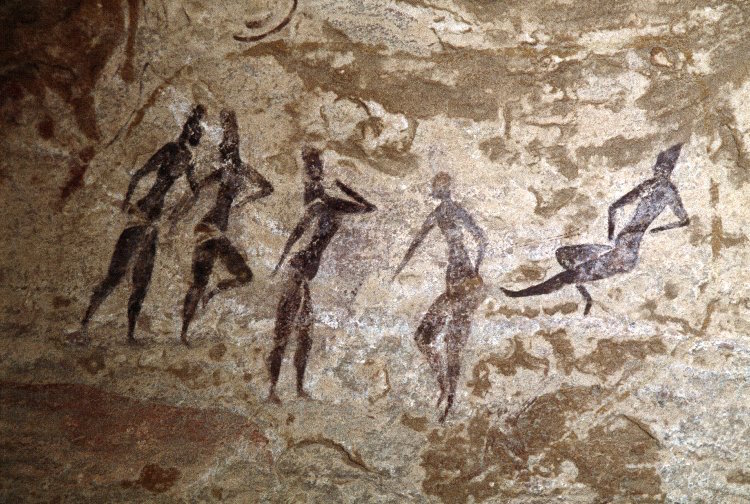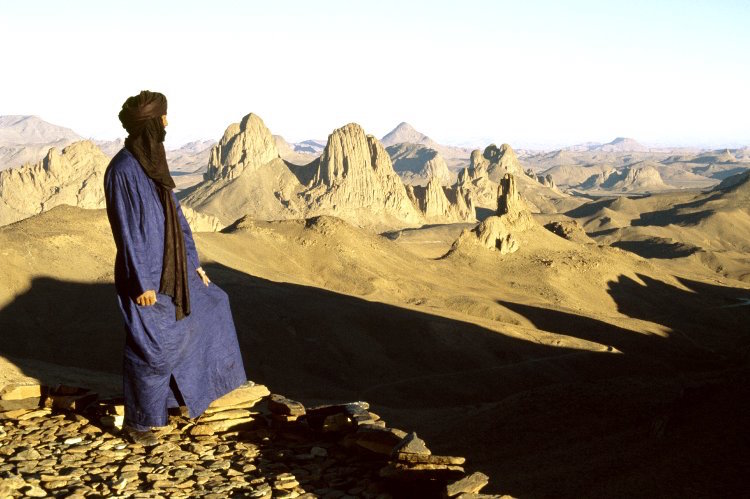Rock Art

Painted rock art depicting five red figures, from Jabbaren, Ajjer Plateau, Djanet, Tassili, Algeria. 2013,2034.4248 © TARA/David Coulson
Before diving into my post, I would like to say I found professor Zimmerman’s youtube video for this week very helpful for this section. I was very curious as to why this demographic was so interesting to you but now, I totally get it. It is crazy to me how overlooked this specific part of the world is overlooked.
What I am going to be focusing on is rock art from North Africa. The specific pieces im referring to are located in Algeria with most of it falling inside the Sahara Desert. The most significant place to find this so called “rock art” is in the “Tassili n’Ajjer (meaning “plateau of chasms)” according to smart history. Over time sand and water has carved out hundreds of passageways, arches, and high stone pillars. Because of the undercuts, there are rock shelters that have been created with perfectly smooth walls on the inside. The Ajjer plateau stretches roughly 550 meters above the plain of Djanet (Located in south east Algeria). This specific area hasn’t been inhabited since the Neolithic periods, these were times (based off of the rock paintings) that had a much wetter environment that provided a wide variety of flora and fauna. The wild thing about this rock art, is that it wasn’t discovered until the 1930’s by French legionnaires.
Tassili has been made famous throughout the world because of more than 15,000 rock paintings and engravings dating back 12,000 years. The rock art truly informs us of their way of life by including pictures and engravings of herds of cattle, giraffes, elephants, as well as including representations of humans hunting, gathering, and dancing. Being that it wasn’t a single artist making these pieces of “rock art”, there are a lot of similarities between the thousands of different paintings and carvings. According to smart history, “images are most often figurative and frequently depict animals, both wild and domestic. There are also many images of human figures, sometimes with accessories such as recognizable weaponry or clothing.” It is also stated that engravings are more commonly found over the paintings but archeologists believe that, that could be a preservation issue due to the lack of durability painting has.

Tuareg looking over the Tassili n’Ajjer massif. 2013,2034.4551 © TARA/David Coulson
Smart history link: https://smarthistory.org/rock-art-north-africa/
Museum, The British, and The British Museum. “Rock Art in North Africa.” Smarthistory, smarthistory.org/rock-art-north-africa/.

I don't know why, but cave paintings are probably the most fascinating of all the ancient arts to me. Cave paintings reinforce the idea that humans are compelled to create art. I did a paper on animation over the summer and discovered that scholars believe cave painting were our first attempts at animation. They do look like animation storyboards. A cave would have been illuminated by a flickering fire. It's easy to imagine the possibilities. The stylistic nature of the paintings are incredible as well. The image you posted above looks like a woman dancing.
ReplyDelete